21 Top Michelangelo Paintings and Sculptures of All Time
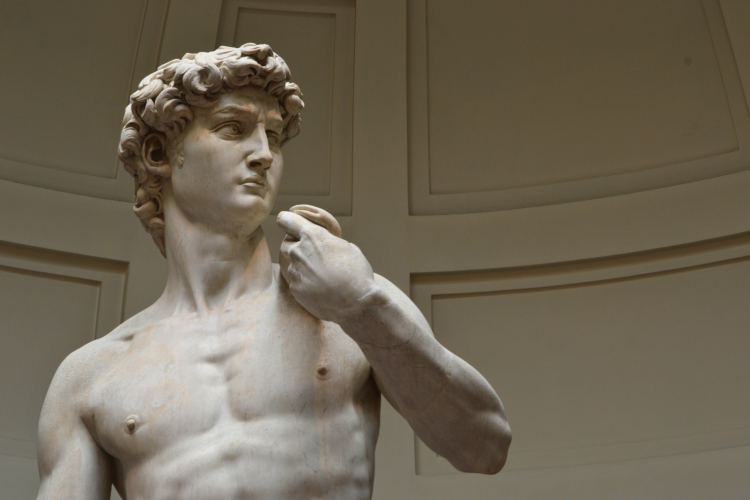
You've likely come across the most famous Michelangelo paintings and sculptures before. After all, this High Renaissance artist is one of the most famous painters and sculptors in art history. His “Creation of Adam,” in which a muscular God reaches out to touch the finger of a reclining Adam, has been often referenced and parodied in pop culture. It is but one of the multiple Michelangelo paintings of note, many of which reside on the ceiling of the famous Sistine Chapel in Vatican City near Rome.
What is an example of a Michelangelo painting? Michelangelo’s subject matter often contained Biblical references and were commissioned by the Catholic Church. Many are frescoes — vivid wall and ceiling paintings that depict religious mythology drawn from the Old Testament. Other smaller Michelangelo paintings and panels are owned by museums around the world. Many of his other most famous works are immense pieces of sculpture carved from beautiful white marble. Read on to find out who this genius was and what makes these Michelangelo paintings so brilliant.
Jump to Section
Who is Michelangelo?
One of the most famous global artists affiliated with the Italian Renaissance during the 15th and early 16th centuries, Michelangelo Buonarroti is often considered one of the preeminent “Renaissance Men” of art history. His skills, training, talent and reputation as a genius spanned numerous mediums and fields, including painting, sculpture and architecture.
What is Michelangelo Best Known For?
Born in Florence in 1474, Michelangelo, sometimes known as “Il Divino” or “The Divine One,” is considered an influential artist that spans decades and eras. Like his fellow Renaissance artist and older contemporary, Leonardo Da Vinci, Michelangelo created some of the most famous works of art from the period, including beautiful frescoes and soaring architectural designs found in some of the most famous buildings in Europe. His influence can be seen among other great works of art, including many Caravaggio paintings which make use of Michelangelo’s painting techniques.
How Many Sculptures & Paintings Did Michelangelo Make?
You may be wondering, "How many Michelangelo paintings exist?" or "What is the oldest Michelangelo painting?" To answer, Michelangelo is credited with having created around 200 finished and unfinished works of art and architecture, many from when he was as young as 13. Later pieces were commissioned by famous patrons like the Catholic Church, Italian aristocrats and the famous Medici family, who were world-renowned patrons of art and architecture.
Michelangelo’s life is well chronicled by two different biographies written before his death by artists Giorgio Vasari and Ascanio Condivi. There are also extensive letters he wrote to family and creative contemporaries. He also, in his later years, wrote a lot of poems, with over 300 known works to his credit. Many of his famous Renaissance paintings are part of the mammoth work on the Sistine Chapel in Rome.
How much is an original Michelangelo painting worth? Some have been valued at over 24 million dollars, while others exist only in copies and reproductions done by other artists of his time.
How Did Michelangelo Die?
Michelangelo died in 1564 at the age of 88 from a short illness. His life span was considerably longer than the average life expectancy during the Renaissance era. While he left several unfinished works at the time of his death, he continued to write, both letters and poems, into his last years. He is buried near Florence at the Basilica di Santa Croce.
Top Michelangelo Paintings & Sculptures
1. Doni Tondo (1506)
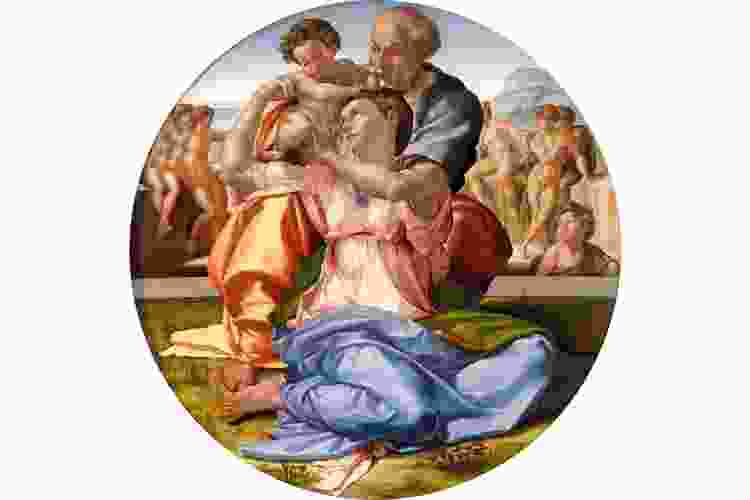
This unique round panel painting of the divine family with an ornately carved frame was painted as a commission for a Florence merchant, Agnolo Doni in commemoration of the birth of his own child. “Tondo” refers to the round shape of the panel, popular for religious paintings in private homes. While not many of the Michelangelo paintings at this time were circular, this painting shows his ingenuity.
2. Sistine Chapel Ceiling (1512)
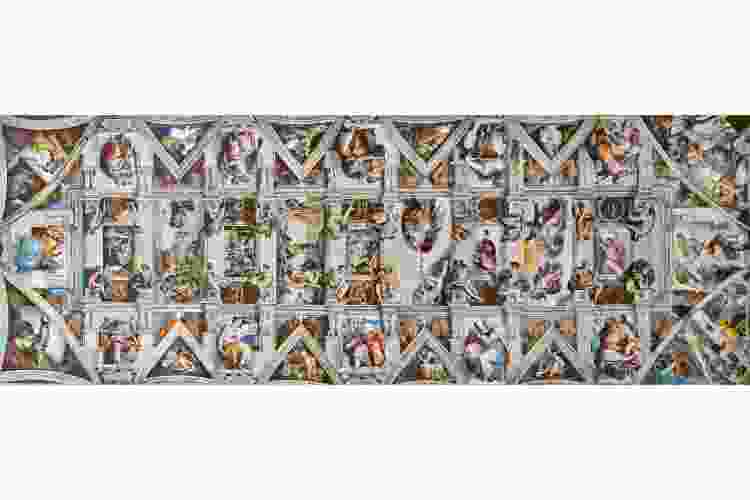
This is by far one of the most famous Michelangelo paintings, which is actually a series of frames. It lives on Rome’s enormous Sistine Chapel ceiling and depicts scenes from the Old Testament, featuring the apostles and other notable Christian figures like God, Adam, Eve and Noah. It was created over four years at the request of the Catholic Church, replacing what had previously been a pale blue ceiling with stars. It took the artist four painstakingly intricate years to complete this masterpiece.
3. The Crucifixion of Saint Peter (1550)

A Roman fresco, this piece is located in the Cappella Paolina in Vatican City, Rome. One of the more sombre Michelangelo paintings, it depicts the death of St Peter at the hands of Roman soldiers. It was commissioned by the Catholic Church in 1541. The downward angle of the crucifix creates a dynamic element. The painting is interesting in that it shows Saint Peter before the crucifixion took place and the cross is hoisted up.
4. The Entombment (1501)
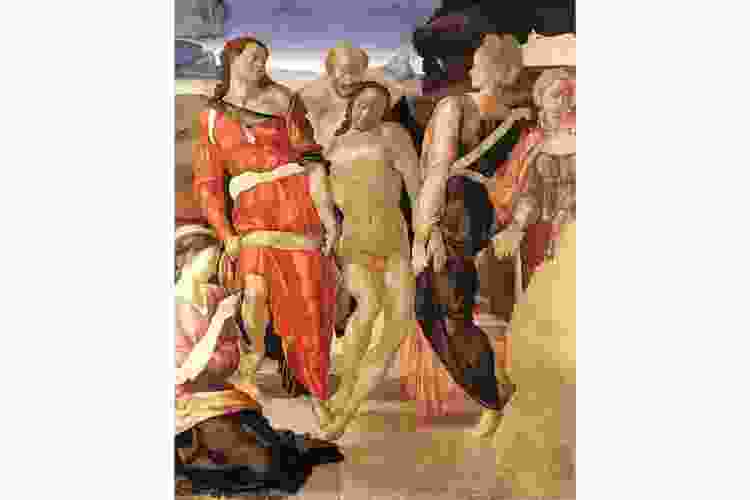
Believed to be left unfinished because the artist left Rome for Florence, this scene of the entombment that followed Christ’s crucifixion started in 1500 as a panel painting in oil. While the artist was originally unknown, Michelangelo’s letters led scholars to believe he had begun work on the scene right before leaving Rome to work on the famous David statue below. The panel is on display and currently owned by The National Gallery in London.
5. David (1501-1504)
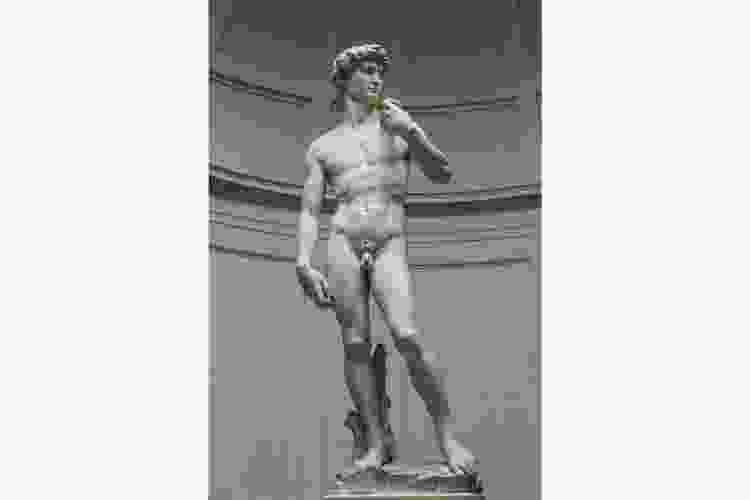
One of Michelangelo’s most famous sculptures, this mammoth statue, carved from white Carrera marble, stands over 17 feet tall and was carved from a single immense block of marble. The piece is located in the Galleria dell'Accademia in Florence. Initially, it was commissioned for a spot in the public square at the Palazzo della Signoria, which now holds a replica statue. Michelangelo actually took over the project after a few other artists sketched out designs to use the large marble slab. The sculpture depicts the famous Biblical figure who fought Goliath and is considered one of the most famous works of art in the world.
6. Pieta (1500)

Commissioned by a Roman cardinal in 1494, Michelangelo worked on this famous sculpture over several years in a side chapel at the Old St Peter’s Basilica in Rome. An early work that cemented his reputation as a master artist, the marble sculpture features the Virgin Mary holding the body of Christ after his crucifixion. It was innovative in both the human expressiveness of the Mary figure as well as being one of the first famous sculptures among Christian art to depict more than one figure at a time.
7. Sistine Chapel Ceiling: The Creation of Adam (1512)
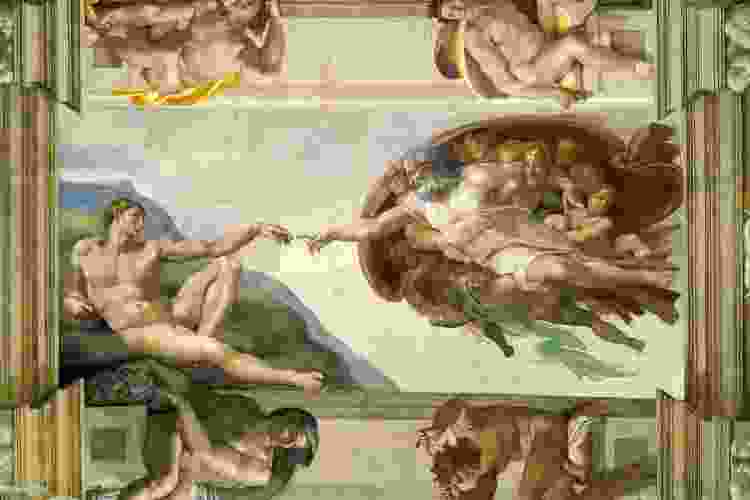
Perhaps the most famous panel of the Sistine Chapel’s immense ceiling, this painting features the moment the reclining Adam was granted life through the touch of God. It’s one of the most famous Michelangelo paintings as well as an image constantly referenced and parodied in pop culture. It is the central panel of the ceiling located inside the Vatican Museum.
8. Sistine Chapel Ceiling: Creation of Eve (1511)
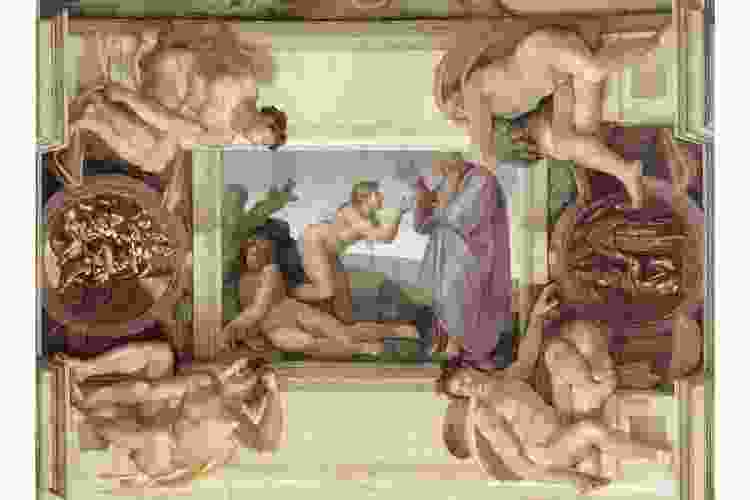
Like the other Michelangelo paintings on the Sistine Chapel ceiling, Creation of Eve is a religious painting. It's the counterpart to the Creation of Adam on the famous series of panels depicting the Old Testament. It is the fifth panel in the creation story and is central to the ceiling’s subject matter and features a newly formed Eve, hands clasped in prayer, as she is created from Adam's rib.
9. Sistine Chapel Ceiling: Delphic Sibyl (1509)
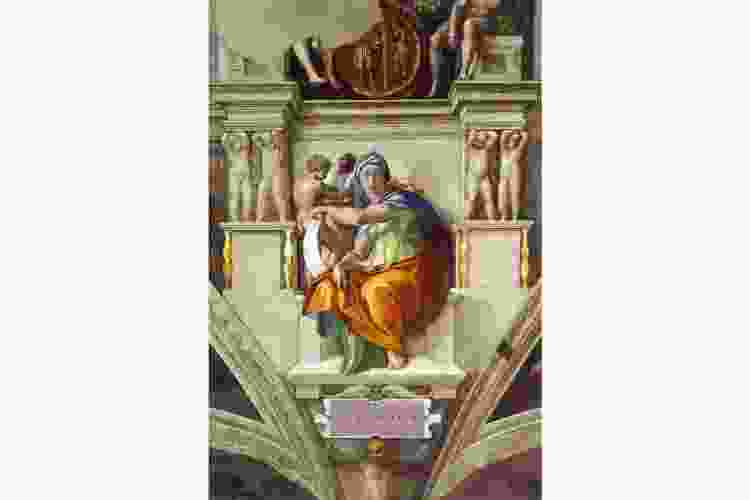
This is one of the most famous and colorful Michelangelo paintings that's also part of the Sistine Chapel ceiling and depicts a Sybil — an ancient Greek prophetess, who could see the future observing the Biblical scenes around her with interest and resignation. She is seated and holding a scroll, with the word “Dephica,” her name, written below and a cherub behind her reading from a book. It is considered one of the more well-known Michelangelo paintings in the ceiling.
10. Sistine Chapel Ceiling: Drunkenness of Noah (1509)
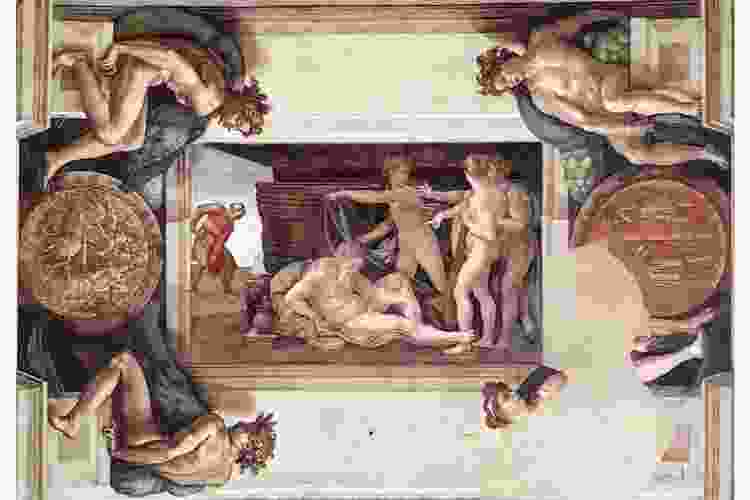
Another one of the famous Michelangelo paintings from the ceiling of the Sistine Chapel, Michelangelo tells the story of Noah after the flood. This is one of the Michelangelo paintings that is filled with meaning. After Noah tills the field and grows vines, he drinks too much wine and passes out by the vat. A drunken reclining Noah unknowingly exposes himself. He is surrounded by his sons who mock him. His clothing is lost, along with his righteousness, it shows that flawed humans always have the chance to transition from an imperfect physical being to a perfect spiritual one.
11. Sistine Chapel Ceiling: The Deluge (1512)

Anoher one of the Michelangelo paintings that features the story of Noah, this one contains many people on the river banks as Noah's boat sails off during the Great Flood. This scene on the Sistine Chapel’s ceiling is the eighth of Noah’s story in the panels and is one of the most populated Michelangelo paintings on the famous ceiling.
12. Sistine Chapel Ceiling: The Sacrifice of Noah (1512)

The seventh in the nine scenes from Genesis, it depicts Noah and his wife at a celebration, where they are in the process of sacrificing a ram surrounded by other figures. The panel is surrounded by nude figures holding up large symbolic medallions.
13. Sistine Chapel Ceiling: Prophet Isaiah (1512)

One of seven prophets given life on the Sistine Chapel’s ceiling, this piece is located near the High Altar and features the Prophet Isaiah in a bright and colorful cloak holding a blue book. Over his shoulder, two cherubs peek from behind his cape and seem to be communicating with the famous biblical character.
14. Sistine Chapel Ceiling: The Prophet Zechariah (1512)
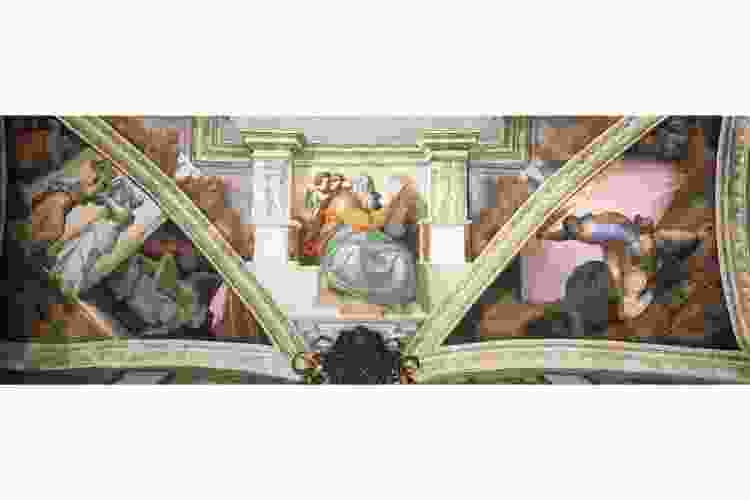
This smaller portion of the Sistine ceiling features the Prophet Zacharia reading from a book in a colorful robe with two cherubs poised over his shoulder. Created during the four years that the artist was working on the ceiling, this is one of the Michelangelo paintings that imagines the prophet as an elderly man and is one of several prophets who appear in the panels on the famous ceiling in Rome.
15. Sistine Chapel Ceiling: The Prophet Ezekiel (1511)
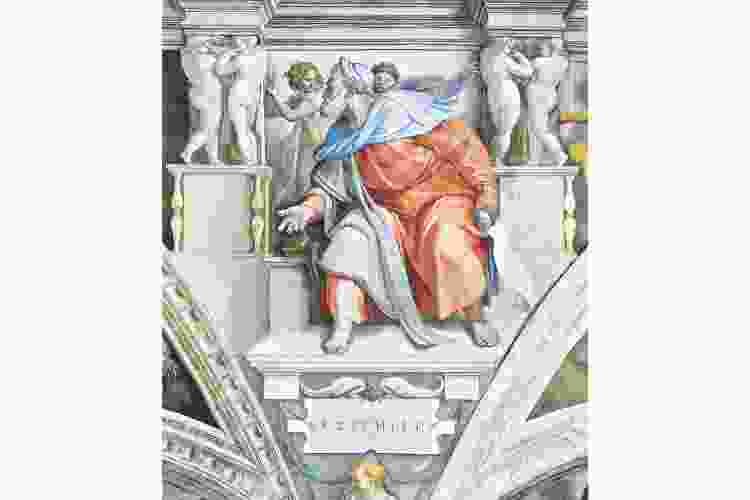
A large elderly man holding a scroll leans and gestures toward surrounding panels of the Fall of Man surrounded by youths who point upward toward the “Creation of Eve” panel and several female sculptures of sibyl figures.
16. Sistine Chapel Ceiling: Libyan Sibyl (1512)
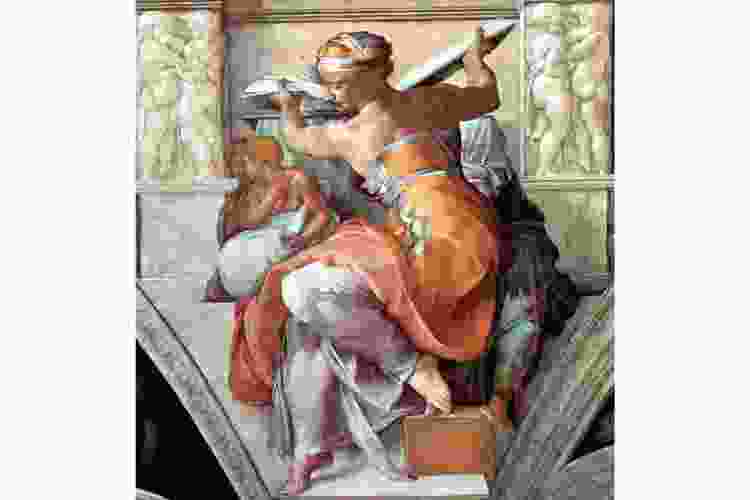
This Sybil holds a large book and looks downward near the main altar wall and is one of the last pieces added by Michelangelo in the final year of his work on the famous ceiling. She appears adjacent to the Old Testament scene of “God Dividing Light from Darkness.” An early sketch on a standard sized sheet of paper owned by the Metropolitan Museum of Art, shows Michelangelo's early conception of the figure. It is one of the more well-known Michelangelo paintings that make up the ceiling.
17. The Moses (1545)
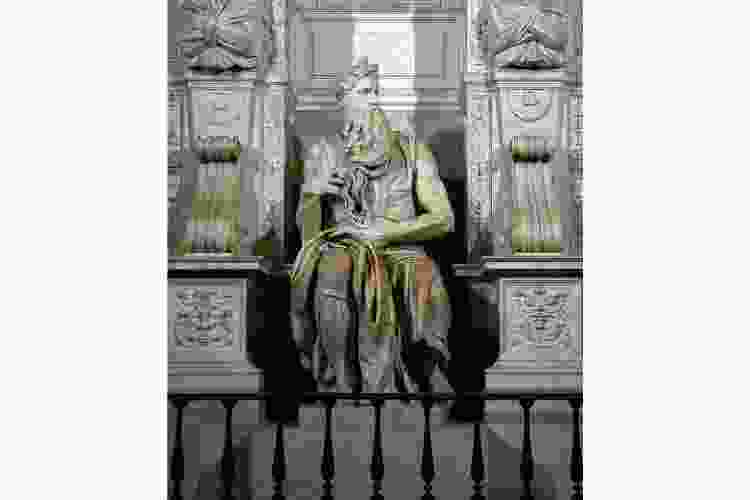
Commissioned in 1505 by Pope Julius II for his own burial tomb, this large sculpture depicts the figure of Moses seated with a long flowing beard and horns atop his head looking into the distance. Why horns? No, it does not represent the Devil, but rather a mistranslation from ancient Hebrew. After Moses came down from Mount Sinai, the Old Testament states that Moses was "horned," meaning he had light shining from his head as he was evermore learned. The best translation we can encounter today is "glorified" according to Christ and Pop Culture.
It was not fully completed until 1545, though Julius II died in 1513, when Michelangelo began the initial sketches and design. It was initially intended to be a part of multiple Biblical statues of a similar nature for the tomb, but now sits in the San Pietro in Vincoli, Rome separate from the Pope’s actual tomb nearby in the Vatican City.
18. Battle of Cascina (1504)
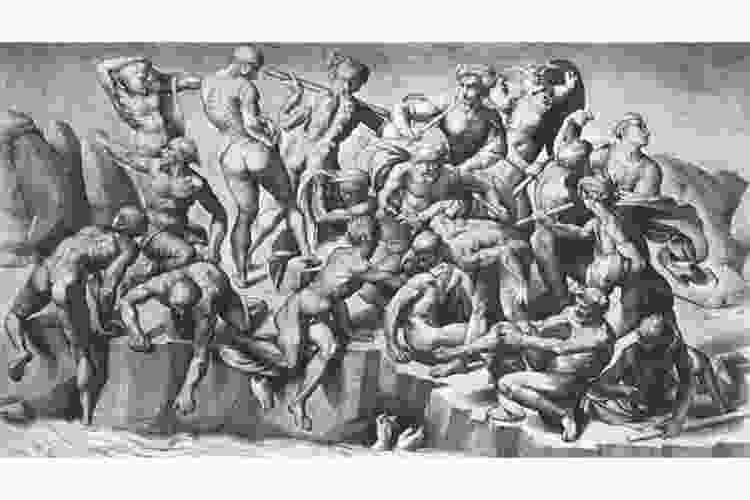
This is another of the famous Michelangelo paintings that was commissioned, this time by a Florentine statesman Piero Soderini. It was intended for a wall in the Palazzo Vecchio among other Renaissance battle works, similar to famed Leonardo da Vinci paintings. While the painting was ultimately never completed, he did complete an early copy that was reproduced by the artist's students and other artists. The crowded battle scene features the Florentine army being attacked by the Pisans near the river Arno.
19. Leda and the Swan (1530)
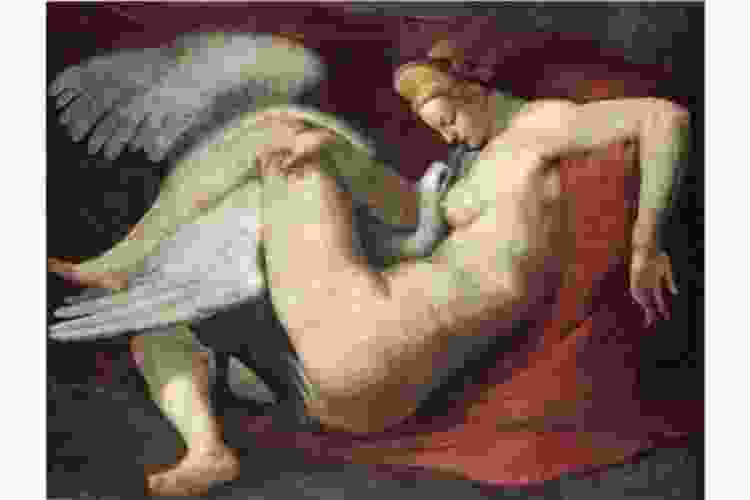
This is one of the Michelangelo paintings that moves away from biblical references and toward mythology. It's based on the famous Greek myth of Zeus’s seduction of a young maiden by taking on the form of a swan and was created in tempera on canvas. The original painting from 1530 was lost, but survives in copies and variants. The original was commissioned by the Duke of Ferrara while Michelangelo was still working in Rome on the Sistine chapel paintings. It is one of the most famous Renaissance paintings depicting Ancient Greek subject matter.
20. The Last Judgment (1535–1541)
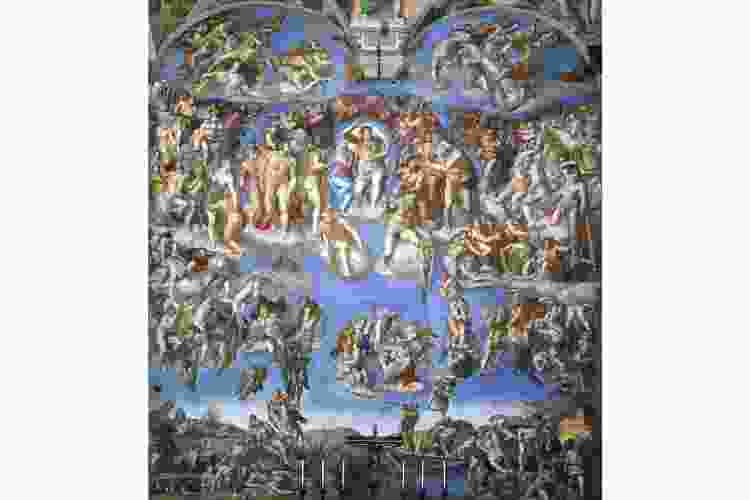
A fresco painting spanning the entire altar wall of the Sistine Chapel in the Vatican City depicts the second coming of Christ and the final judgment of humanity in a crowded scene set against a vivid blue background. It began over two decades after Michelangelo finished the ceiling of the chapel, commissioned by Pope Clement II. It took over four years to create. The figures float in the air as they rise from the landscape at the bottom. It is a masterwork in composition, as the eye always leads to Christ at the center, while the saved float up and the damned head down.
21. Manchester Madonna (c. 1497)
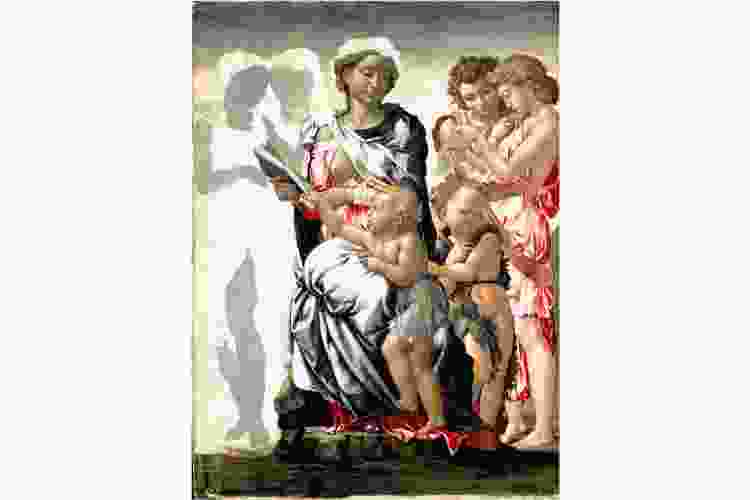
On display at the National Gallery of London, this artwork is unfinished and is one of three surviving Michelangelo paintings believed to have been created in Rome that were only later attributed to the famous artist. It features Mary and child along with St. John the Baptist. Unfinished figures occupy one side of the painting while the more complete figures are in places sparse and incomplete.
One of the preeminent artists of both the High Renaissance and Western art, many Michelangelo paintings show innovation that influenced countless artists both in his time and in the centuries afterward. His work may even inspire you as an artist to explore new mediums and techniques, as well as a “Renaissance Man” (or shall we say "Renaissance Person") approach to creativity.
For even more painting ideas, check out other experiences happening on Classpop!

